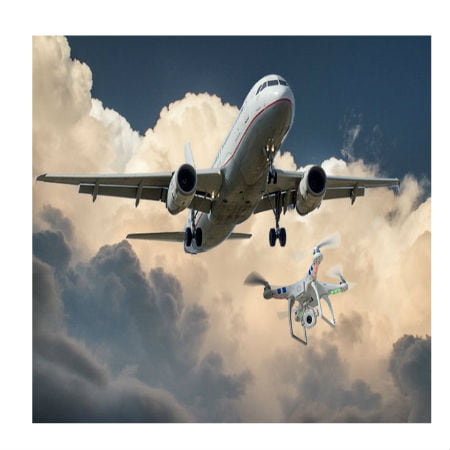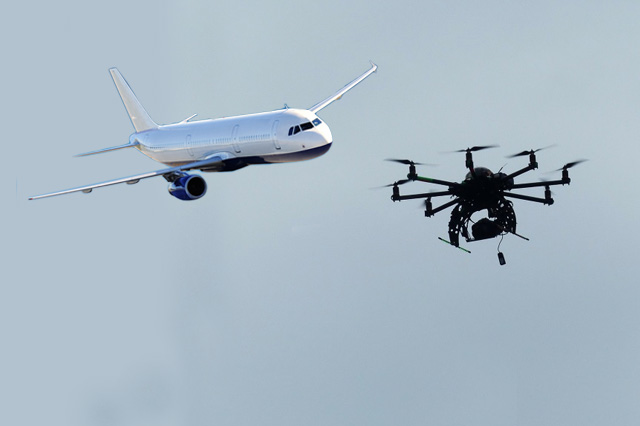
Experts have warned that drones could be the cause of future plane crashes. The increased warnings have come after a British Airways plane carrying 132 passengers collided with a drone.
Drones usage has increased tremendously, and the number of near plane crashes caused by drones have increased also.
A drone flew into an Airbus A320 as it was about to land at the Heathrow Airport. But in spite of this, the drone landed safely.
Plane Crashes Caused by Drones: A Call for Drone Regulation
Scroll down for video

Dai Whittingham, chief executive of the UK Flight Safety Committee, told MailOnline Travel that “the faster the aircraft and the heavier and faster the drone, the greater the damage.”
“It is also important to remember that drones are not like birds, which are flesh and blood and deform on impact.
Drones contain a motor and a lithium battery; these batteries contain a lot of energy and are known to explode when damaged,” said Whittingham.
Whittingham also noted that if a drone was sucked into a plane, “the probability is that the engine would be destroyed.”
Although it is unlikely more than one engine would be damaged, there is always that possibility that there will be multiple failures.
Even worse, drones could crash into the windscreen of a plane and injure any of the pilots. In 2014, near-misses involving plane crashes caused by drones were reported six times. That number grew to 31 in 2015.
Former pilot of the British Airline Pilot Association (BALPA), Stephen Landells, said that “it is not certain a plane would crash if a drone flew into an engine.”
But because of the big lithium iron battery, it could make the engine explode and anything could happen—bits of metal could poke holes in the aircraft.
Whittingham said that drones aren’t bad and they have a wide range of uses. But he says that those who make use of drones must be professionals with the Civil Aviation Authority approval.
He admitted that the problem is not with drones but with the people who are unaware of the risks associated with them or those that just plainly misuse them.
According to the Civil Aviation Authority, drones must be flown at an altitude less than 400 feet and within direct unaided vision of the operator.

Geograph
Earlier this year, International Air Transport Association (IATA) chief, Tony Tyler, had warned that drones are a rapidly growing threat to civilian aircraft.
“I am as excited as you are about the prospect of having pizza delivered by a drone,” he told a conference in Singapore. “But we cannot allow [drones] to be a hindrance or safety threat to commercial aviation. The issue is real. We have plenty of pilot reports of drones where they were not expected, particularly at low altitudes around airports. There is no denying that there is a real and growing threat to the safety of civilian aircraft [coming from drones].
“We need a sensible approach to regulation and a pragmatic method of enforcement for those who disregard rules and regulations and put others in danger.”
IATA’s primary concern is drones flying at low altitudes near airports that could threaten planes taking off or landing, Rob Eagles, also from IATA, added.
Watch the video below